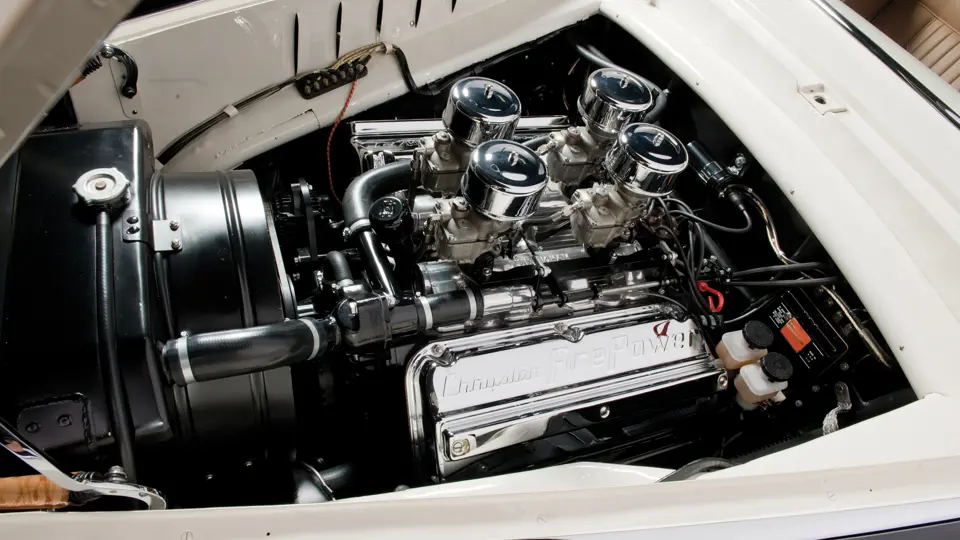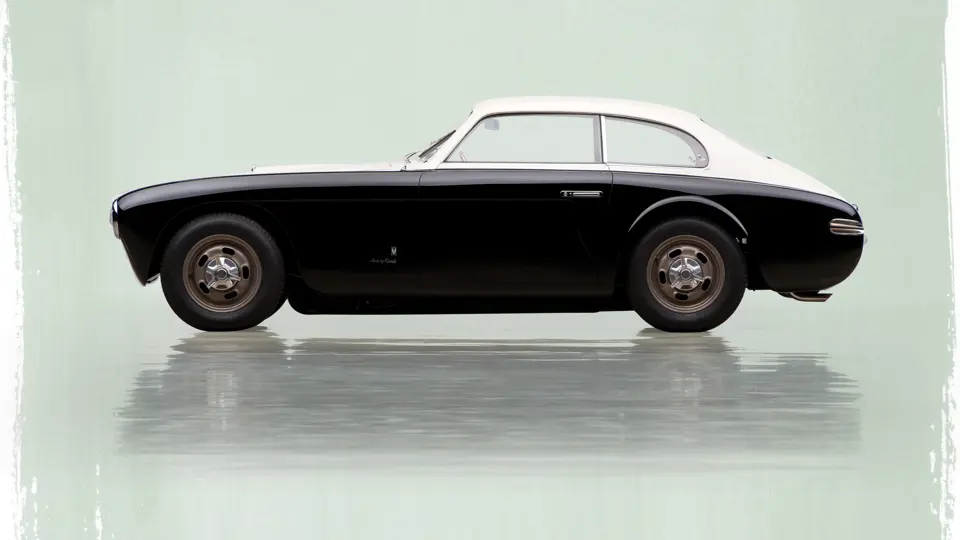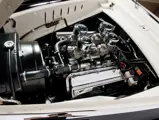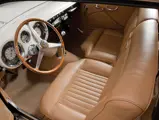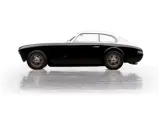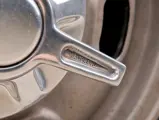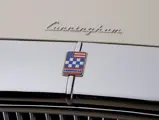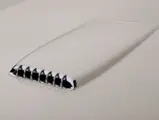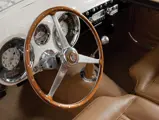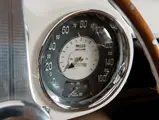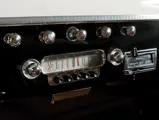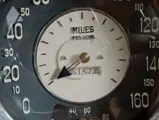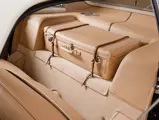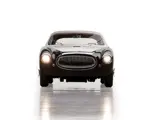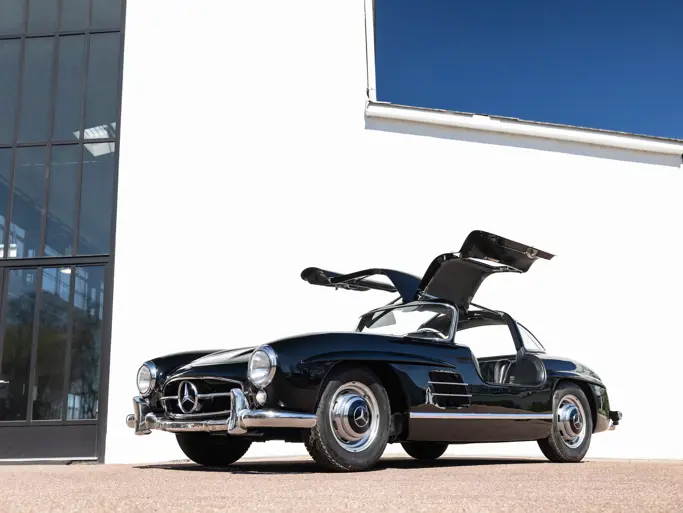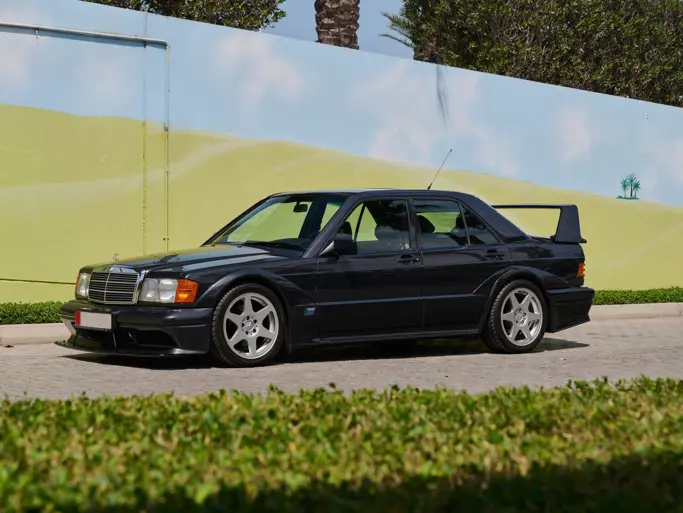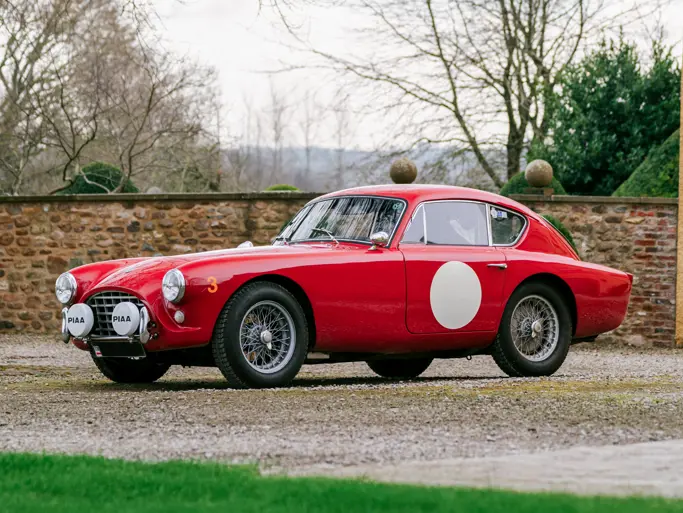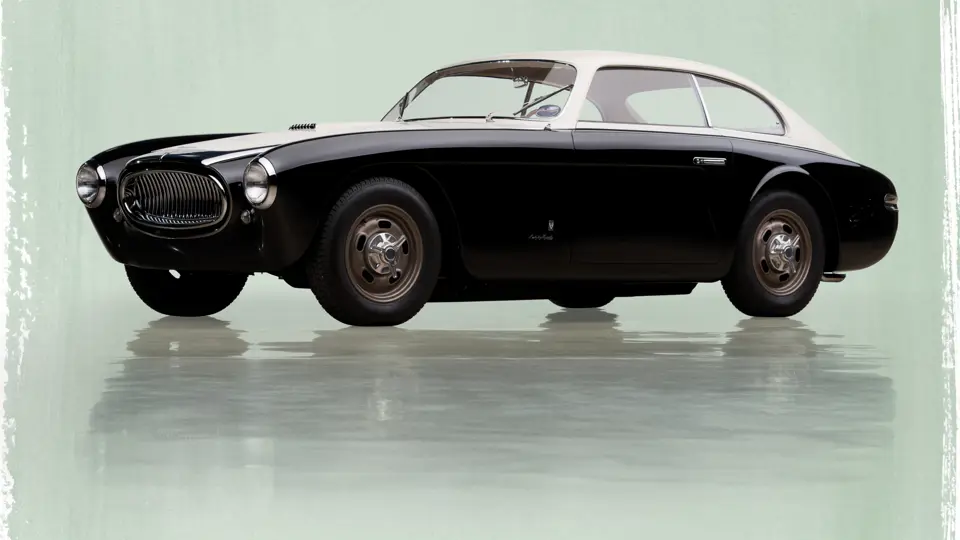
1953 Cunningham C-3 Coupe by Vignale
{{lr.item.text}}
$869,000 USD | Sold
{{bidding.lot.reserveStatusFormatted}}
- The first Vignale-bodied C3; a Cunningham factory prototype
- Used by the factory for promotional photography
- Originally delivered to Carl Kiekhaefer, of Mercury Marine fame
- Formerly owned by Tom Armstrong and Bud Lyon
Est. 350 bhp, 392 cu. in. OHV Chrysler V-8 engine with four Zenith single-barrel carburetors, five-speed manual transmission, independent front suspension with coil springs, live rear axle with coil springs, and four-wheel hydraulic drum brakes. Wheelbase: 107 in.
Like many sportsmen of the 1950s, Briggs Cunningham dreamed of winning at Le Mans. Unlike many of those men, Cunningham, the heir to the Swift meatpacking fortune, had the virtually limitless funds required to enable such efforts. After finding that production American cars, such as Cadillacs, were “close but no cigar,” he turned his bank account and energy towards developing his own all-new automobile, one that could run at Le Mans and emerge victorious, but also be, at its core, American.
Cunningham’s cars were smooth, low-slung designs that had strong tubular chassis, independent coil-spring front suspension, and tuned Chrysler Hemi V-8 power. The racing models evolved throughout the early 1950s, winning at Road America and Watkins Glen in 1951, but the Le Mans organizers threw Cunningham a curve ball when he started his preparations to enter their 1952 event. They specified that at least 25 road going cars had to be built in order to qualify the entrant as an automobile manufacturer. Cunningham gave it some thought and concluded that a road going version of his racing car would not be such a bad idea; in fact, it would actually help to offset the astronomical expenses being incurred by his racing team.
Production of an entire car in Cunningham’s West Palm Beach facility would have been cost-prohibitive, so the maestro contracted Italian coachbuilder Alfredo Vignale to build him coupe and cabriolet bodies, which were based on a design that had been penned by Giovanni Michelotti and had obvious Ferrari influences. The C3, as it was known, was still not cheap, as it was based on a modified racing chassis and still had a Hemi V-8. It was essentially a larger, hotter Ferrari but with American grunt under the hood, and it cost about $9,000. However, no one could argue that the power was not worth the cost, as the C-3 was good for 0–60 mph in around 7 seconds and could hit a top speed of nearly 150 mph.
Cunningham had limited production of the C3 underway by early 1953, but the project was dogged by delays. While his shop could build a chassis every week, it took Vignale, working with time-honored handcraftsmanship, almost two months to complete the rest of a car. Ultimately, C3 production wound to a close with five cabriolets and twenty coupes produced.
Although the Cunningham team never won at Le Mans, he did finish 3rd overall in both 1953 and 1954, and he would continue to race with ever-modified versions of his own design, along with a staggering roster of Jaguars, Listers, Maseratis, and Corvettes, until 1963. The C3 was as close as he ever came to building a true production model, and it was the only Cunningham ever built for the public.
CHASSIS NUMBER 5206: THE PROTOTYPE
According to Richard Harman’s invaluable book, Cunningham: The Passion, The Cars, The Legacy, chassis number 5206 was the first C3 built with Vignale coachwork, which was installed following a costly initial one-off effort of being assembled entirely in West Palm Beach. This particular car is the one referred to by the Cunningham factory as “the prototype,” and it was originally built with numerous unique characteristics, including a unique bumper, no chrome rubbing strip beneath the doors, special Cunningham script on the nose, a chrome windshield surround, and a Chrysler Hemi V-8 with four Zenith single-barrel carburetors and a custom Cunningham intake manifold, as well as additional special performance modifications. Interestingly, the car borrowed numerous Ford interior components, including its radio, heater, and hand brake.
Cunningham used the prototype for publicity photographs, which were taken in July 1952 and widely published by the motoring press, such as a photo of the interior being published in the September issue of Road & Track magazine. After its publicity uses, the car was delivered to Carl Kiekhaefer, the owner of Mercury Marine and one of the most famous boosters of American racing efforts in the 1950s. Kiekhaefer had earlier owned the West Palm Beach-built C3 and was unhappy with it, so this new Vignale-bodied model was an effort to make amends.
In October 1954, Kiekhaefer sold chassis number 5206 to Empire Motors, of Iowa. It later passed to James Toensing, of Newport Beach, California, and then to Jack Woods, of Tulsa, Oklahoma, in whose ownership it appeared in the motion picture State Fair in 1962. It is believed that the car was taken off the road that year, and it remained unregistered until 2004, when it was discovered in pieces by well known and respected enthusiast Tom Armstrong, of Issaquah, Washington. Mr. Armstrong purchased the C3 and commissioned its restoration, refinishing it in cream and black, removing the bumpers, and installing contemporary Halibrand bolt-on wheels.
The car next passed into the ownership of the late, beloved collector and friend to many, Ervin “Bud” Lyon, for whom it was further sorted extensively by the renowned shop of Paul Russell & Company in Essex, Massachusetts. The Cunningham was modified lightly for racing purposes, with a five-speed manual gearbox and a mildly hot rodded 1957 Chrysler 300C engine installed, both of which remain under the hood today. The original Cunningham engine and four-speed transmission have been crated and remain with the car.
The Andrews Collection acquired the Cunningham from Mr. Lyon in 2009, and it has remained a favorite rally and tour car in their stable ever since, being used for such events as the Colorado Grand. It has continued to be well-maintained, both cosmetically and mechanically, and it remains virtually as it appeared when the restoration was completed. Also included with the car is a set of custom-machined wheels for rally and tour use. Most importantly, it is reported by the Andrews’s collection manager, John Standifer, to be one of his favorite automobiles to drive, which is a testament to its thrilling road abilities.
As the prototype for the only road car built by an American legend, this is an exceptionally important sporting car, and a collection of sports cars without one could ever be considered complete.
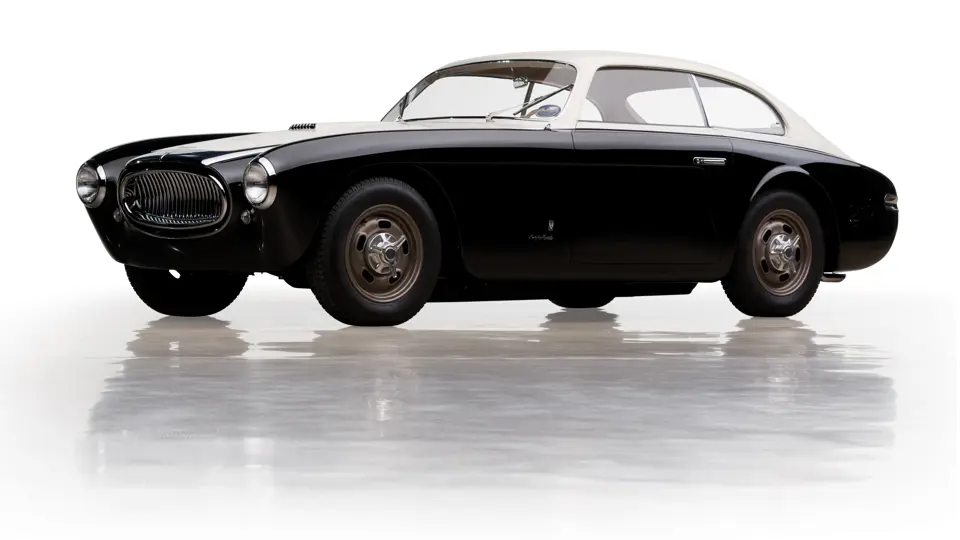
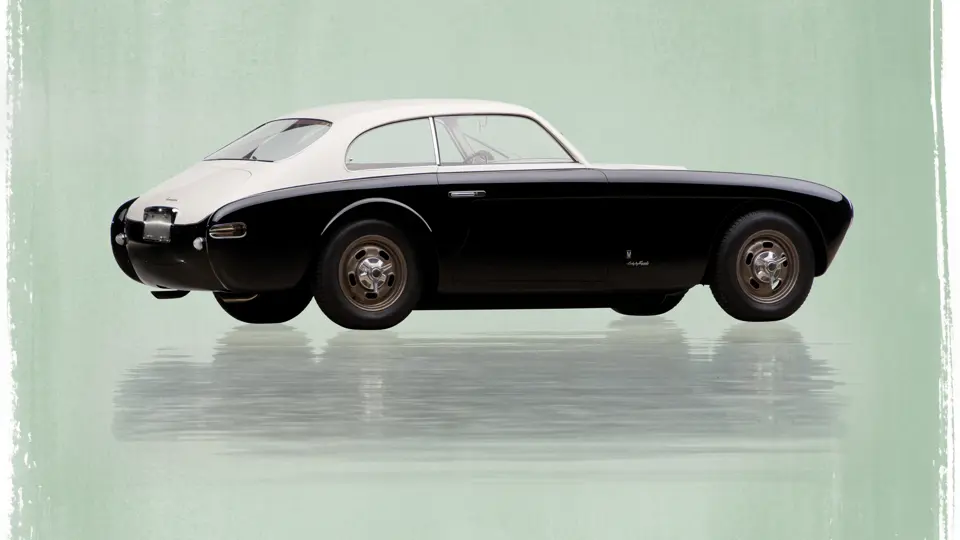
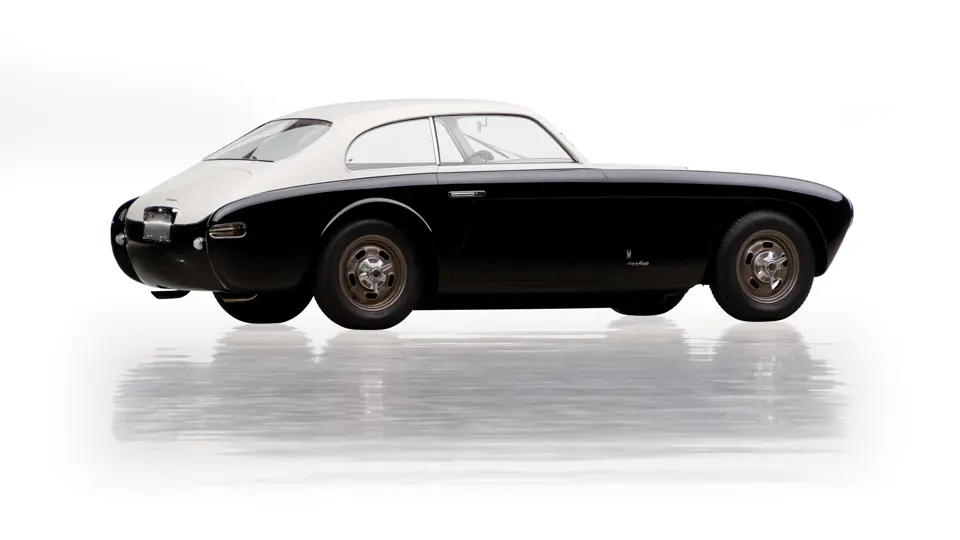

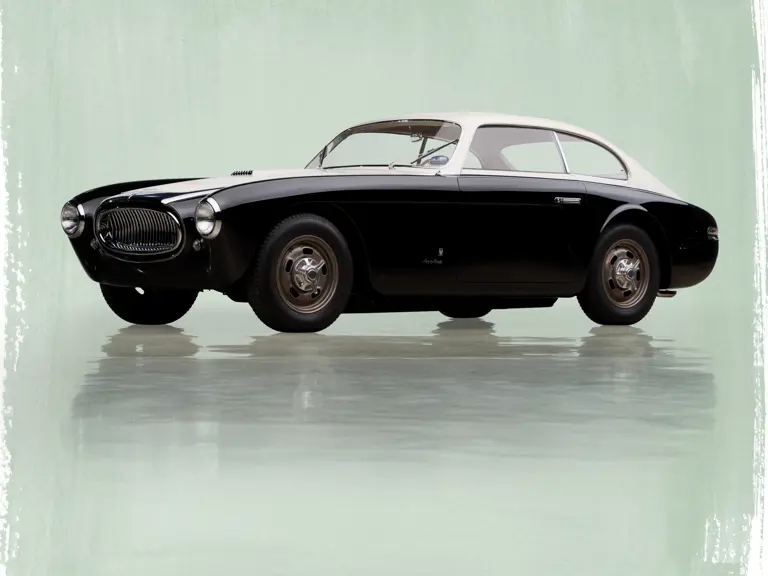
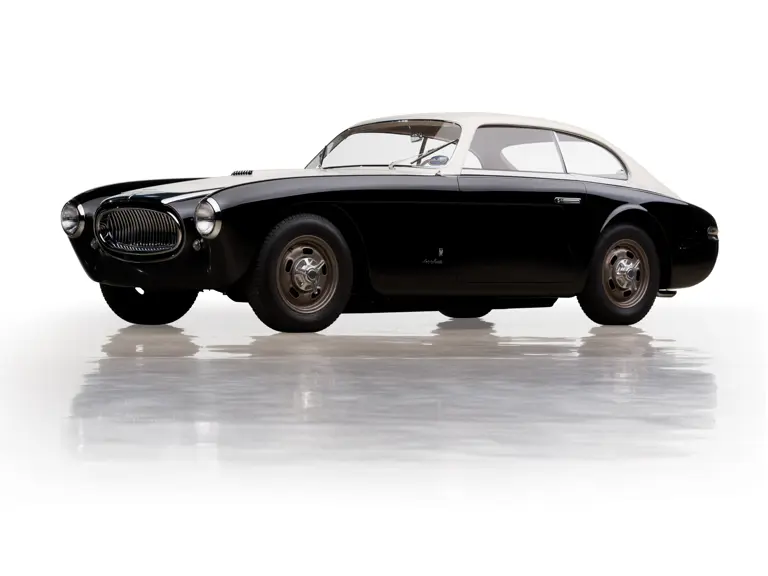
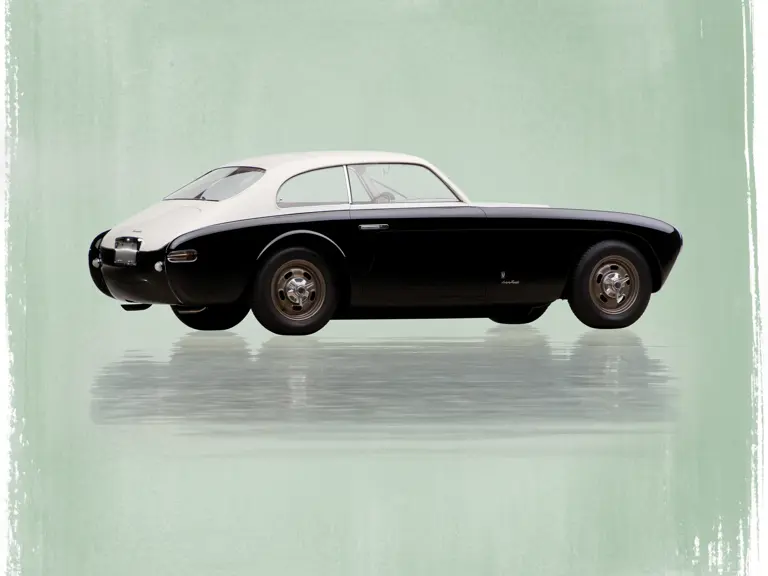

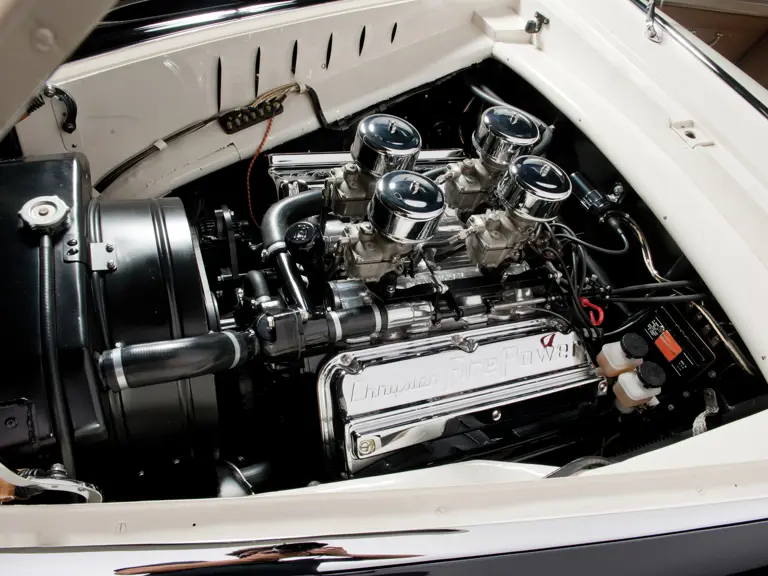
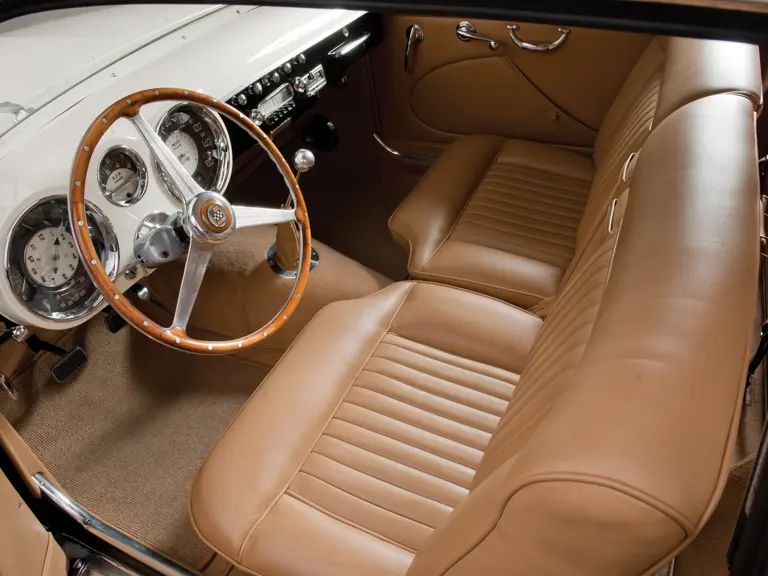

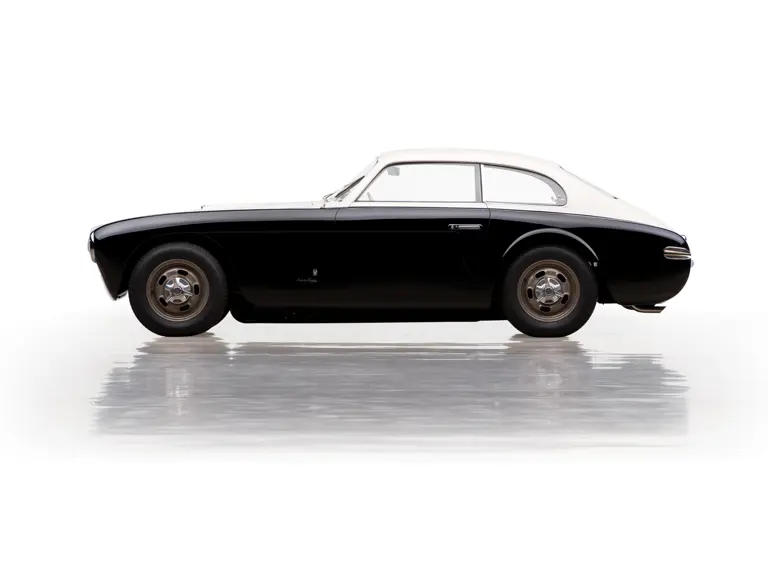
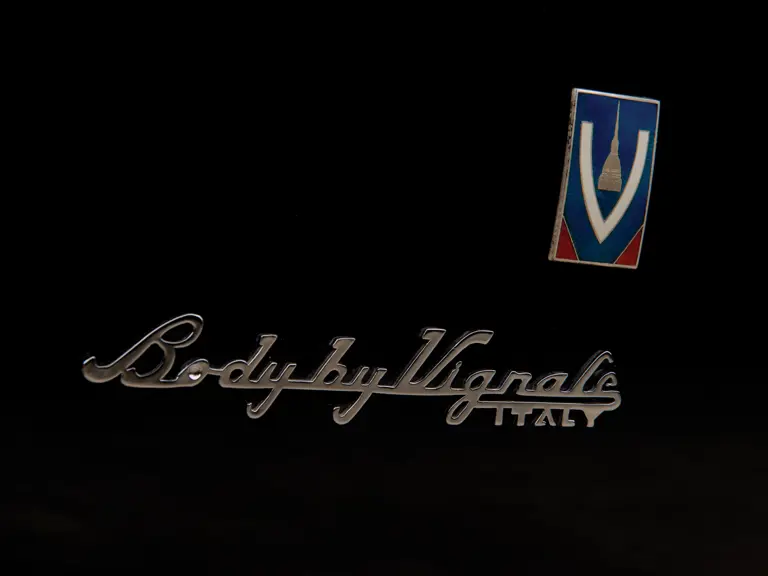

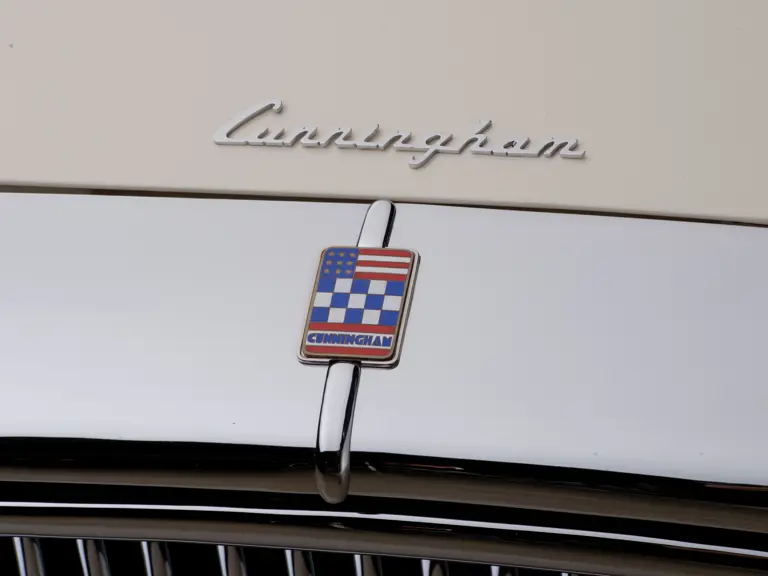
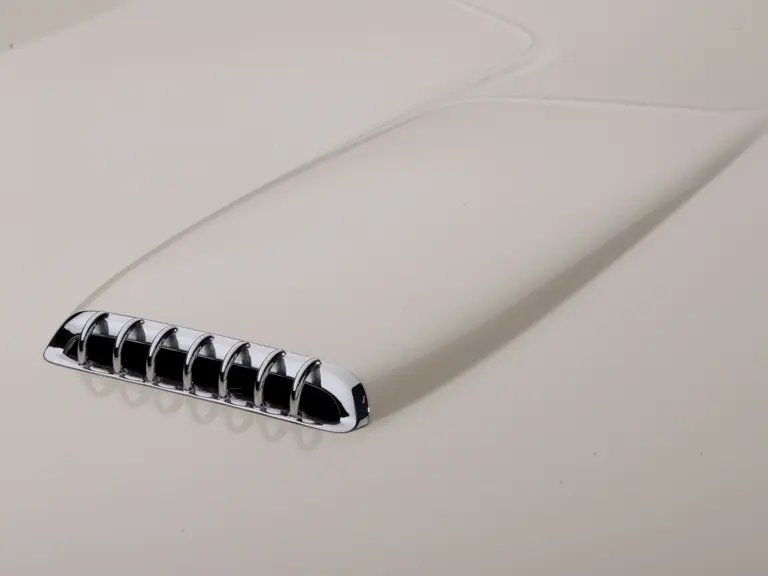
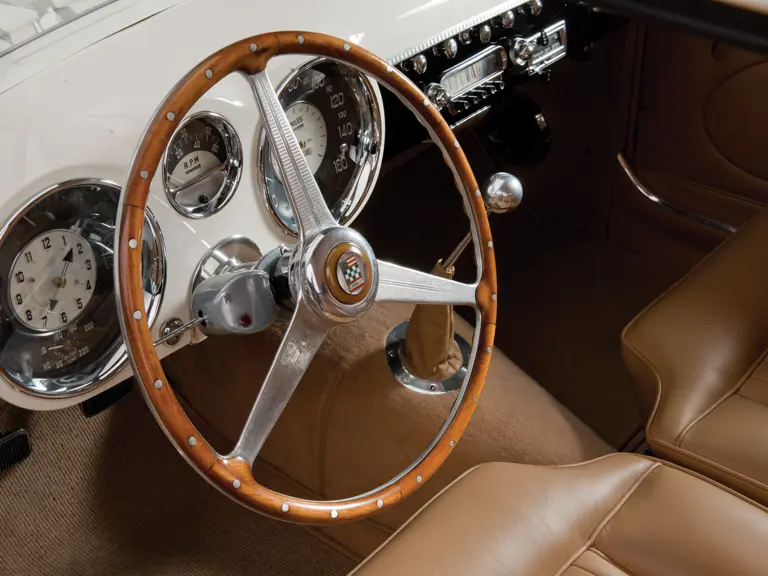
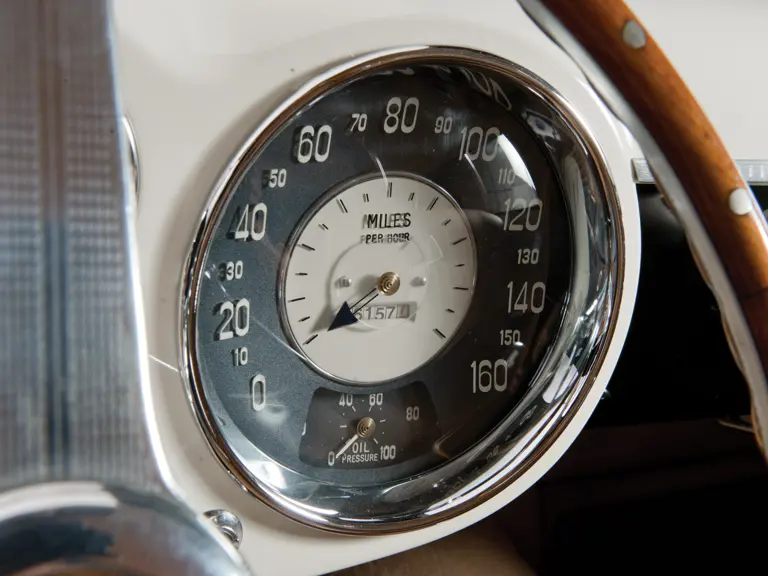
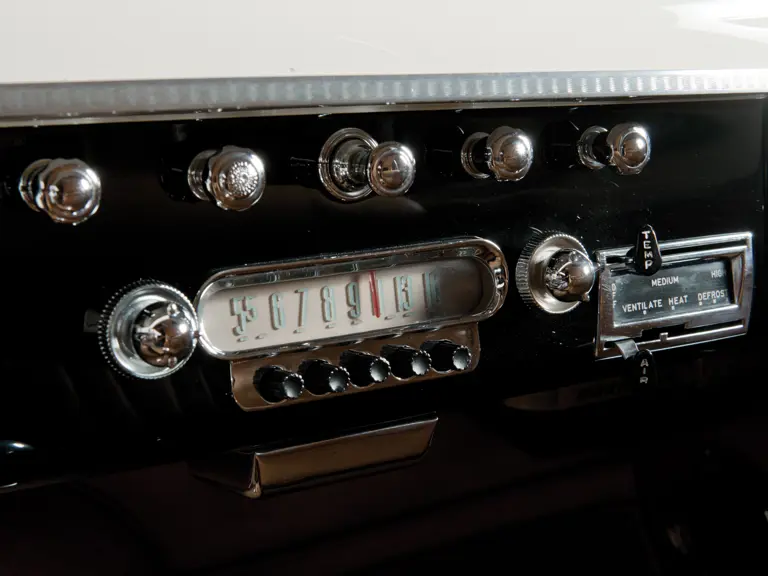
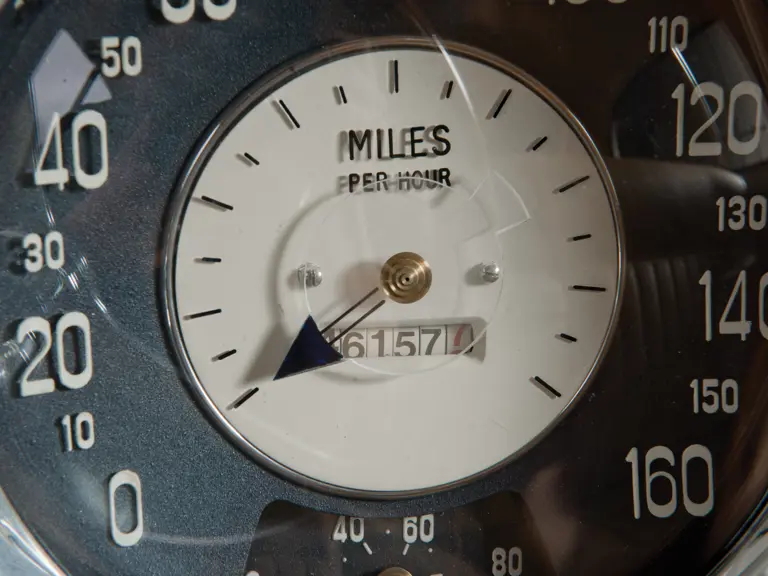

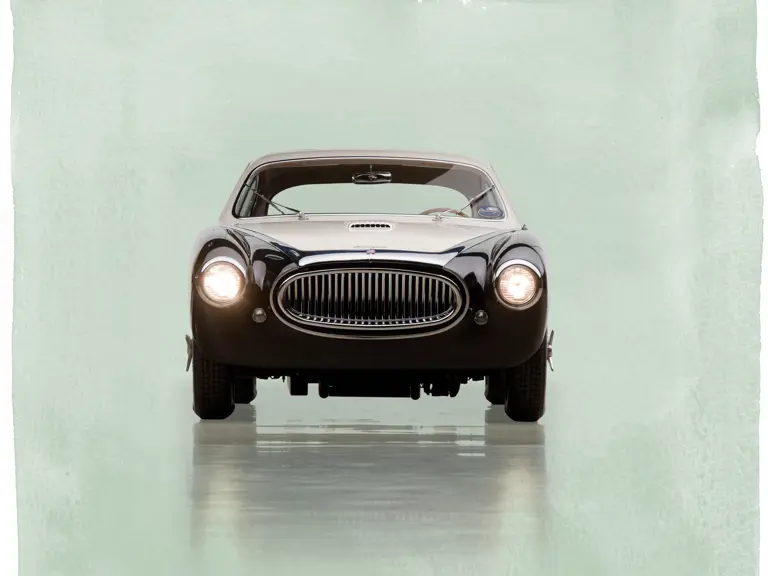
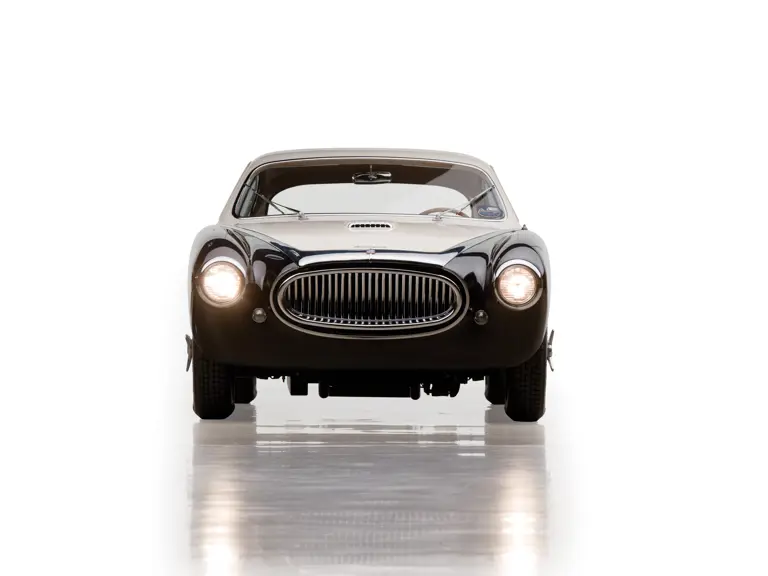
 | Fort Worth, Texas
| Fort Worth, Texas
